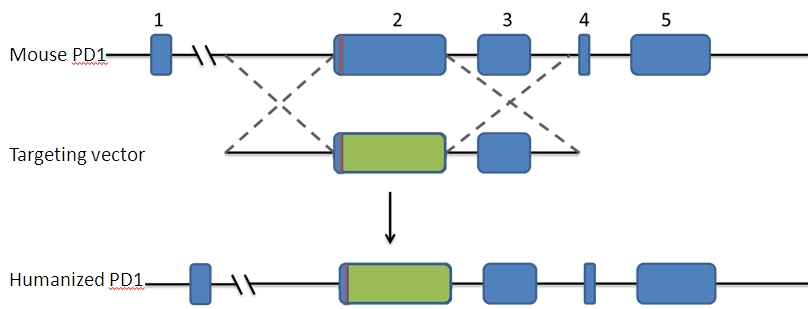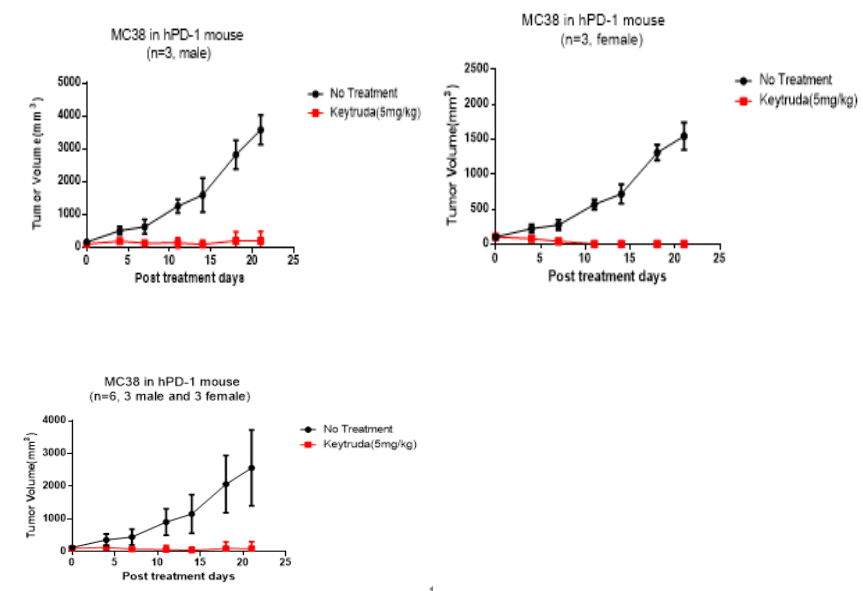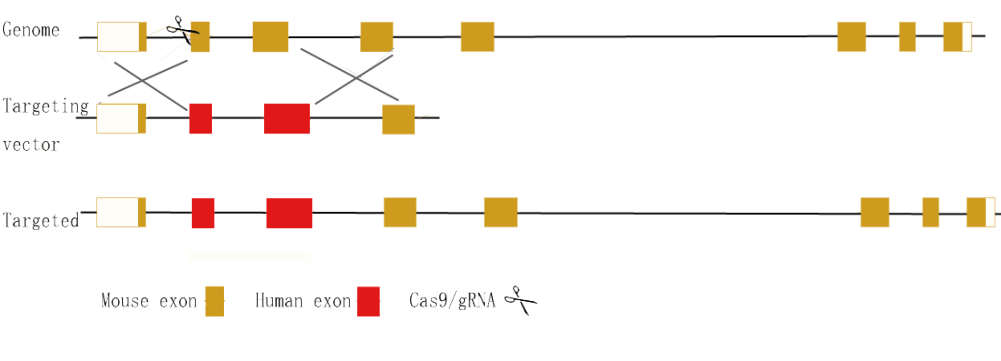Gene replacement refers to the process of substituting a mouse gene with a gene from another species based on research needs. It can involve replacing part of a gene's functional domain or the entire gene. For small fragment replacements under 1 kb, the CRISPR/Cas9 strategy can be employed. For large fragment gene replacements, it is necessary to use ES or EPS preparation strategies to succeed.

Figure 1. Schematic diagram of creating gene replacement mice.
1. Technical Process:
Targeting vector design → Vector construction → Microinjection (EPS targeting) → Mouse identification
2. Technical Advantages:
(1) CRISPR is used for the replacement of small gene fragments.
(2) ES/EPS is used for the replacement of large gene fragments.
3. Successful Cases:
Case One: Preparation of humanized PD-1 immune checkpoint mice on C57 and BALb/c backgrounds

Figure 2. Strategy for creating hPD-1 mice. Blue box: Mouse sequence; Green box: Human sequence.

Figure 3. Efficacy evaluation of hPD-1 mice. The positive drug Keytruda shows a significant tumor-suppressing effect on humanized PD-1 mice, with no gender differences (both female and male PD-1 humanized mice), making them ideal models for in vivo efficacy testing.
Case Two: Preparation of humanized hLAG3 immune checkpoint mice

Figure 4. Gene replacement strategy for hLAG3 mice.

 animalmodel@vital-bj.com
animalmodel@vital-bj.com +8610-84928167
+8610-84928167